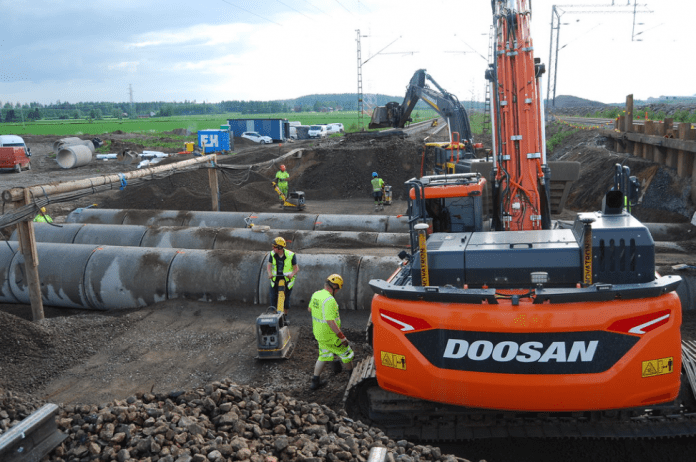Finland’s first dry port, Kouvola RRT is now 80% complete and is expected to be ready for use in 2022 in the city of Kouvola.
The 420,000m2 dry port is projected to enable cost-effective and climate-friendly transports between the Nordic countries, Asia and Europe, while it will have Finland’s longest loading tracks of 1,100 metres, which can be used by electric locomotives.
In 2020, Kouvola was selected as one of the best logistics centres in Europe by the German Association of Logistics Centres. Three years later, services in the area are anticipated to be significantly diversified when the Kouvola Rail and Road intermodal terminal starts operations.
The terminal combines road and rail transport and enables handling trains longer than a kilometre in the area. “The maximum axle weight of trains can be as much as 25 tonnes,” noted Kouvola RRT project manager, Tero Valtonen.
In addition, according to a statement, there will be no need to divide the trains, which makes loading them cost-effective and fast.
The platforms of the terminal have been released, while the tracks are under construction, and next spring “Finland’s largest asphalting job will start, when the terminal field will get its asphalt surfacing,” said Valtonen. There is also an area of almost 370,000m2 to be paved, according to a statement.
Furthermore, Valtonen noted that two new loading tracks will be built in the terminal area by the Finnish Railways in the next year.
The open-access terminal, which will utilise new types of cargo handling methods such as robotics and digitalisation, combines different modes of transport and can handle trains longer than one kilometre undivided.
Kouvola RRT is Finland’s first rail and road terminal in the European Union’s (EU) core traffic network and part of the development of the Trans-European Transport Network (TEN-T).
The future area is projected to bring the level of Kouvola’s logistics service up to EU targets, as the TEN-T core network will be implemented to a service level defined at the EU level by 2030.
One of the EU’s goals is to shift road transports surpassing 300 kilometres to other modes, such as rail or waterway transport. The goal is a transition of 30% by 2030 and a transition of more than 50% by 2050.
Carbon dioxide (CO2) emissions will be reduced as transport is shifted to rail. Finland is also committed to promoting carbon neutrality in the Traffic 12 program, which aims to increase foresight in transport policy.







